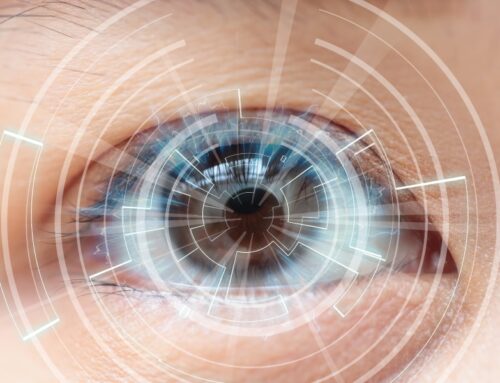The Link Between Keratoconus and Sleep Apnea
 Keratoconus and sleep apnea are two seemingly unrelated medical conditions that affect different parts of the body. Keratoconus is an eye disorder characterized by the thinning and bulging of the cornea, while sleep apnea is a sleep disorder in which a person’s breathing repeatedly stops and starts during sleep. However, recent research has revealed a surprising connection between these two conditions, shedding light on the complex interplay between various aspects of our health. In this blog, we will explore the link between keratoconus and sleep apnea, how they are connected, and what this means for those affected by these conditions.
Keratoconus and sleep apnea are two seemingly unrelated medical conditions that affect different parts of the body. Keratoconus is an eye disorder characterized by the thinning and bulging of the cornea, while sleep apnea is a sleep disorder in which a person’s breathing repeatedly stops and starts during sleep. However, recent research has revealed a surprising connection between these two conditions, shedding light on the complex interplay between various aspects of our health. In this blog, we will explore the link between keratoconus and sleep apnea, how they are connected, and what this means for those affected by these conditions.
Understanding Keratoconus
Keratoconus is a progressive eye disorder that affects the cornea, the clear, dome-shaped front surface of the eye. In a healthy eye, the cornea is shaped like a smooth, round dome, but in individuals with keratoconus, the cornea becomes thin and conical, causing a range of visual problems. These can include blurred vision, distorted vision, sensitivity to light, and increased nearsightedness or astigmatism. While the exact cause of keratoconus is still not fully understood, it is believed to be a multifactorial condition influenced by both genetic and environmental factors.
Understanding Sleep Apnea
Sleep apnea is a sleep disorder characterized by recurrent interruptions in breathing during sleep. These interruptions, known as apneas, can be caused by the relaxation of the muscles in the throat and tongue, which leads to the narrowing or complete closure of the airway. When the airway becomes blocked, the person momentarily stops breathing, often leading to a sudden awakening or arousal to restore normal breathing. Sleep apnea can have a significant impact on an individual’s overall health and quality of life, as it can lead to excessive daytime sleepiness, fatigue, and an increased risk of various medical conditions, including heart disease, stroke, and diabetes.
The Emerging Connection
While the connection between keratoconus and sleep apnea may seem unexpected at first glance, recent studies have suggested a strong association between the two conditions. Researchers have found that individuals with sleep apnea are at a higher risk of developing keratoconus, and vice versa. Here are some key findings that highlight the link:
Oxidative Stress: One of the proposed mechanisms linking sleep apnea and keratoconus is oxidative stress. Sleep apnea is associated with intermittent drops in blood oxygen levels, which can lead to oxidative stress—a process in which there is an imbalance between the production of reactive oxygen species (free radicals) and the body’s ability to neutralize them. Oxidative stress has been implicated in the progression of keratoconus and may contribute to its development.
Increased Eye Pressure: Sleep apnea has also been linked to an increase in intraocular pressure (IOP), which is a known risk factor for keratoconus. Elevated IOP can weaken the cornea and potentially contribute to the development of keratoconus.
Collagen and Tissue Changes: Both sleep apnea and keratoconus involve changes in collagen and tissue integrity. Collagen is a structural protein found in various parts of the body, including the cornea. Sleep apnea may disrupt collagen metabolism, potentially affecting the cornea’s structure and stability.
Genetic Predisposition: Genetic factors play a role in the development of both keratoconus and sleep apnea. Some studies have suggested that there may be shared genetic factors that predispose individuals to both conditions, although more research is needed to fully understand this aspect.
Implications and Treatment
The emerging link between keratoconus and sleep apnea has important implications for the management and treatment of both conditions. Healthcare providers should consider the possibility of a connection between these two disorders when evaluating patients, especially if they exhibit symptoms or risk factors for both conditions. This interdisciplinary approach can lead to more comprehensive and effective care.
For individuals diagnosed with both keratoconus and sleep apnea, it is essential to address both conditions simultaneously. Treating sleep apnea through lifestyle modifications, continuous positive airway pressure (CPAP) therapy, or other medical interventions may not only improve sleep quality but also potentially slow the progression of keratoconus. Additionally, managing keratoconus with techniques such as corneal cross-linking, specialty contact lenses, or, in severe cases, corneal transplantation, can help improve vision and overall eye health.
The connection between keratoconus and sleep apnea is a compelling example of how various aspects of our health are interconnected. While more research is needed to fully understand the underlying mechanisms and genetic factors at play, healthcare providers should be aware of this association and consider it when evaluating patients with either condition. Early detection and comprehensive management of both keratoconus and sleep apnea can significantly improve the quality of life for those affected, highlighting the importance of a holistic approach to healthcare. As our understanding of these conditions deepens, it is likely that new treatment approaches and preventive strategies will continue to emerge, offering hope for individuals facing these challenging medical issues.




